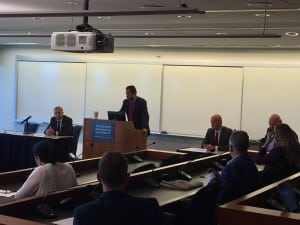
Estonia’s emphasis on sharing its cyber defense successes and capabilities of public agencies and the private sector is a continued goal and potential example for the United States, according to governmental representatives speaking at a panel Monday on the small nation’s forthcoming role as European Union (EU) President beginning in 2018.Representatives from Estonia’s cyber defense entities discussed lessons learned in the 10 years since the country was the victim of a massive cyber attack perpetrated by Russia in 2007, at…

 By
By 








